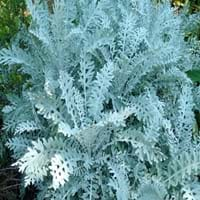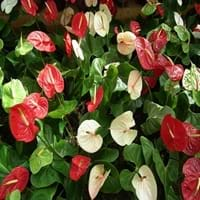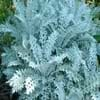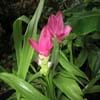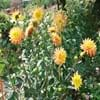Life Span
Annual and Perennial
Perennial
Type
Tender Perennial
Tender Perennial
Origin
Southern Europe, Mediterranean
Mexico, Latin America and the Caribbean, Central America, South America
Types
Silver Lace, Cirrus
Not Available
Number of Varieties
Not Available
Habitat
Coastal Regions, Warmer regions
gardens, Near ponds
USDA Hardiness Zone
7-11
Not Available
AHS Heat Zone
12-1
Not Available
Sunset Zone
H1, H2, 8, 9, 10, 11, 12, 13, 14, 15, 16, 17, 18, 19, 20, 21, 22, 23, 24
Not Available
Habit
Cushion/Mound-forming
Not Available
Minimum Width
Not Available
Flower Color
White, Yellow, Purple
Not Available
Flower Color Modifier
Bicolor
Not Available
Fruit Color
Tan
Not Available
Leaf Color in Spring
Blue Green, Silver
Green, Dark Green
Leaf Color in Summer
Blue Green, Silver
Green, Dark Green
Leaf Color in Fall
Blue Green, Silver
Green, Dark Green
Leaf Color in Winter
Light Green
Green, Dark Green
Leaf Shape
Irregular
Heart-shaped
Plant Season
Spring, Summer, Fall, Winter
Spring, Summer, Fall, Winter
Sunlight
Full Sun
Full Sun, Partial Sun, Partial shade
Growth Rate
Medium
Not Available
Type of Soil
Clay, Loam, Sand
Loam, Sand
The pH of Soil
Acidic, Neutral, Alkaline
Acidic, Neutral, Alkaline
Soil Drainage
Well drained
Well drained
Bloom Time
Early Summer, Summer, Late Summer
Indeterminate
Tolerances
Drought
Drought
Where to Plant?
Container, Ground
Ground, Pot
How to Plant?
Seedlings, Stem Planting
Seedlings
Plant Maintenance
Medium
Medium
Watering Requirements
Do Not over Water, Never Over-water, Requires regular watering, Requires watering in the growing season, Water Deeply
Keep the ground moist but not water-logged, Water Deeply, Water in morning to avoid prompting diseases, Water when soil is dry
In Summer
Lots of watering
Lots of watering
In Spring
Moderate
Moderate
In Winter
Average Water
Average Water
Soil pH
Acidic, Neutral, Alkaline
Acidic, Neutral, Alkaline
Soil Type
Clay, Loam, Sand
Loam, Sand
Soil Drainage Capacity
Well drained
Well drained
Sun Exposure
Full Sun
Full Sun, Partial Sun, Partial shade
Pruning
Remove dead leaves, Remove deadheads
Cut leaves after fall, Remove damaged leaves, Remove dead leaves, Remove deadheads, Shape and thin as needed
Fertilizers
fertilize every 2-3 weeks while growing, Nitrogen, Phosphorous, Potassium
General garden fertilizer
Pests and Diseases
Blight, Downy mildew, Powdery mildew, Red blotch, Rust, White mold
Aphids, Mealybugs, Scale
Plant Tolerance
Drought
Drought
Flowers
Insignificant
Showy
Flower Petal Number
Single
Not Available
Fragrant Flower
Yes
Not Available
Fragrant Fruit
No
Not Available
Foliage Texture
Medium
Not Available
Foliage Sheen
Matte
Not Available
Self-Sowing
Yes
Not Available
Attracts
Flying insects, Insects
Not Available
Allergy
Avoid during Pregnancy, Skin irritation, Skin rash, Toxic
no allergic reactions
Aesthetic Uses
Showy Purposes
Beautification, Showy Purposes
Beauty Benefits
No Beauty Benefits
Not Available
Environmental Uses
Air purification, Food for insects, Prevent Soil Erosion
Air purification
Medicinal Uses
Headache, Menstrual Disorders, Migraines
No Medicinal Use
Part of Plant Used
Leaves
Flowers
Other Uses
Employed in herbal medicine, Showy Purposes, Used as Ornamental plant, Used for its medicinal properties
Showy Purposes, Used as Ornamental plant
Used As Indoor Plant
Yes
Yes
Used As Outdoor Plant
Yes
Yes
Garden Design
Bedding Plant, Container, Cutflower, Edging, Mixed Border, Rock Garden / Wall
Bedding Plant, Container, Cutflower, Houseplant, Tropical
Botanical Name
CENTAUREA cineraria
ANTHURIUM scherzerianum
Common Name
Silver dust
Flamingo Flower
In Hindi
डस्टी मिलर
राजहंस फूल
In German
Dusty Miller
Flamingoblume
In French
Dusty Miller
flamant rose fleur
In Spanish
Dusty Miller
flamenco flor
In Greek
Dusty Miller
Flamingo λουλούδι
In Portuguese
Dusty Miller
flamingo flor
In Polish
Dusty Miller
flamingo kwiat
In Latin
Dusty Cicero
flos Flamingo
Phylum
Anthophyta
Magnoliophyta
Class
Magnoliopsida
Liliopsida
Order
Asterales
Alismatales
Family
Asteraceae
Araceae
Genus
Centaurea
Anthurium
Clade
Angiosperms, Asterids, Eudicots
Angiosperms, Monocots
Tribe
Cynareae
Not Available
Subfamily
Carduoideae
Not Available
Number of Species
Not Available
Importance of Dusty Miller and Flamingo Flower
Want to have the most appropriate plant for your garden? You might want to know the importance of Dusty Miller and Flamingo Flower. Basically, these two plants vary in many aspects. Compare Dusty Miller and Flamingo Flower as they differ in many characteristics such as their life, care, benefits, facts, etc. Every gardener must at least have the slightest clue about the plants he wants to plant in his garden. Compare their benefits, which differ in many ways like facts and uses. The medicinal use of Dusty Miller is Headache, Menstrual Disorders and Migraines whereas of Flamingo Flower is No Medicinal Use. Dusty Miller has beauty benefits as follows: No Beauty Benefits while Flamingo Flower has beauty benefits as follows: No Beauty Benefits.
Compare Facts of Dusty Miller vs Flamingo Flower
How to choose the best garden plant for your garden depending upon its facts? Here garden plant comparison will help you to solve this query. Compare the facts of Dusty Miller vs Flamingo Flower and know which one to choose. As garden plants have benefits and other uses, allergy is also a major drawback of plants for some people. Allergic reactions of Dusty Miller are Avoid during Pregnancy, Skin irritation, Skin rash and Toxic whereas of Flamingo Flower have no allergic reactions respectively. Having a fruit bearing plant in your garden can be a plus point of your garden. Dusty Miller has no showy fruits and Flamingo Flower has showy fruits. Also Dusty Miller is not flowering and Flamingo Flower is not flowering . You can compare Dusty Miller and Flamingo Flower facts and facts of other plants too.
